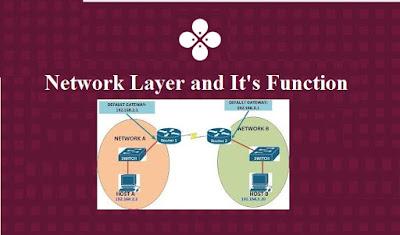Network layer design issues
There are following network layer design issues to be considered A key network layer design issue is todetermine how packets are routed from source to destination. These Routes can be based on static tables that are made into the network and rarely changed. Routes also may be dynamic, when a new packet arrive then as per the network load route may be changeto reflect the current network load. There may be a situation whentoo many packets are present in the subnet at the same time this is known as congestion in the network. Tocontrol of such congestionis also a network layer design issue. However, to ensure the quality of service provided( such as delay, transmit time, jitter, etc) is also a network layer design issue. Moreover, When a packet has tomove from source network to anotherto get to its destination, many problems can arise such as- The addressing used by the destination network may be different from the source network.
- The destination network may not accept the packet at all because it is too large.
- The protocols may differ, and so on.
Network layer in osi or TCP/IP model
Network layer of TCP/IP model in computer network is responsible for taking the packets from the source node or host and deliver it to the destination node. Packet goes through several intermediate node and network router during its transmission from source to destination. The correct delivery of entire message or data packet at the destination side is verified at Transport layer by TCP protocol. The network layer in osi model suite supports the Internet working Protocol which provides the basic packet delivery to all TCP/IP networks. ARP, RARP, ICMP and IGMP are network layer protocols to achieve the functioning. ARP: ARP is known as address resolution protocol which is used to find out the physical address correspond to an IP address It is required because final delivery of the data packet is on physical address of the host. RARP: IT is known as reverse address resolution protocol and used to find IP address for a physical address it requires when a we first time connect a computer to a network. ICMP: ICMP is known as Internet Control Message Protocol and this protocol is used by a node or gateway to send the notification related to datagram problems back to the sender. ICMP sends query and error reporting messages. IGMP: Internet group management Protocol; IT is used by host and adjacent routers on network to making the multicast group membership.
Network layer functions and services
The basic network layer functions and network layer services are as follows: (1) Define the Datagram: Datagram is the basic unit of transmission in the internet. Internet Protocol transports data in packet which called datagram and each of the datagram is transported separately. Datagram can travel along different routes and can be arrived out of order at the destination host and may be duplicate. (2)Routing : Routing is a process of moving data across the network from source to destination. During this moving at least one intermediate node is encountered. The routing process basically consist of two tasks. First it decide the path for data transfer and after that send the packet on decided path. At router routing algorithm decides which output line or path is used to transfer the packet. (3)Congestion Control: At Network Layer Congestion may occur at router when of data packet arriving at the router are coming at more data rate as compare to data rate used for outing the data packet from the router. Congestion may be caused by many factors. When data packets reaches at router the these data packet are put in to a queue in the order in which these arrived. In this situation a condition may arise when for all incoming packets same path is selected for transmission. This situation cause congestion at router. There may be some another reasons for congestion such as low bandwidth and limited amount of memory. (4) IP Addressing: IP Addressing or logical addressing is the main task performed at the network layer. IP address is also known as logical address which is assigned to each host present in a network. In IP addressing scheme two device can not have same IP address. In private network IP address can be managed easily. In order to maintained uniqueness of IP address are registered to the Internet Network Information Center. When a particular organization apply for registration then corresponding authority provides a network address to the applicant organization. Which then make the network for its useand assign the IP address to each host in that network. Now let us discuss what is the IP Address. Actually an IP address is a 32 bits number ( as per IPV4) and This 32 bits number is divided in two parts ( ( 1) Network Address or Network ID.( (2) The Host Address or Host ID. The first part of IP address provide the information about the network address on which the host resides and second part is host id which is used to identify a particular host on the given network.
